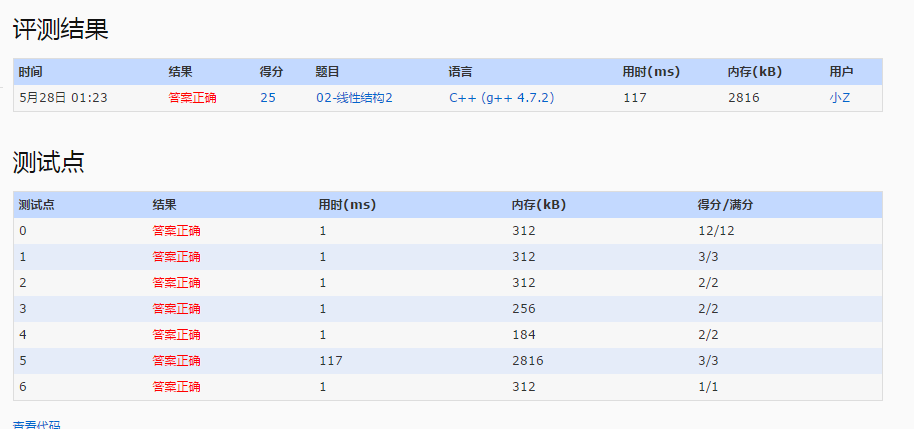Given a constant K and a singly linked list L, you are supposed to reverse the links of every K elements on L. For example, given L being 1→2→3→4→5→6, if K = 3, then you must output 3→2→1→6→5→4; if K = 4, you must output 4→3→2→1→5→6.
Input Specification:
Each input file contains one test case. For each case, the first line contains the address of the first node, a positive N (<= 105) which is the total number of nodes, and a positive K (<=N) which is the length of the sublist to be reversed. The address of a node is a 5-digit nonnegative integer, and NULL is represented by -1.
Then N lines follow, each describes a node in the format:
Address Data Next
where Address is the position of the node, Data is an integer, and Next is the position of the next node.
Output Specification:
For each case, output the resulting ordered linked list. Each node occupies a line, and is printed in the same format as in the input.
Sample Input:
00100 6 4 00000 4 99999 00100 1 12309 68237 6 -1 33218 3 00000 99999 5 68237 12309 2 33218
Sample Output:
00000 4 33218 33218 3 12309 12309 2 00100 00100 1 99999 99999 5 68237 68237 6 -1
提交了10次才完全正确,花了快5个小时。感觉自己实力好差。
#include<iostream> #include <string> using namespace std; class linked{ public: int data; int next; }; linked *list = new linked[100000]; int prehead; int nexthead; int Reverse(int head, int k){ int cnt = 1,temp; int news = head; int olds = list[head].next; while (cnt < k){ temp = list[olds].next; list[olds].next = news; news = olds; olds = temp; cnt++; } list[head].next = olds; prehead = head; nexthead = olds; return news; } int main(){ int firstNode, address, next,N, k, data,head,preshead; int sum = 0; cin >> firstNode >> N >> k; for (int i = 0; i < N; i++){ cin >> address >> data >> next; list[address].data = data; list[address].next = next; } int p = firstNode; while (p != -1){ sum++; p = list[p].next; } head = Reverse(firstNode, k); for (int i = 1; i < sum / k; i++){ preshead = prehead; list[preshead].next = Reverse(nexthead, k); } p = head; while (p!= -1){ printf("%05d ",p); cout << list[p].data <<" "; if (list[p].next != -1) printf("%05d ", list[p].next); else cout << list[p].next << endl; p = list[p].next; } return 0; }
ac的图片看着真的很爽。
